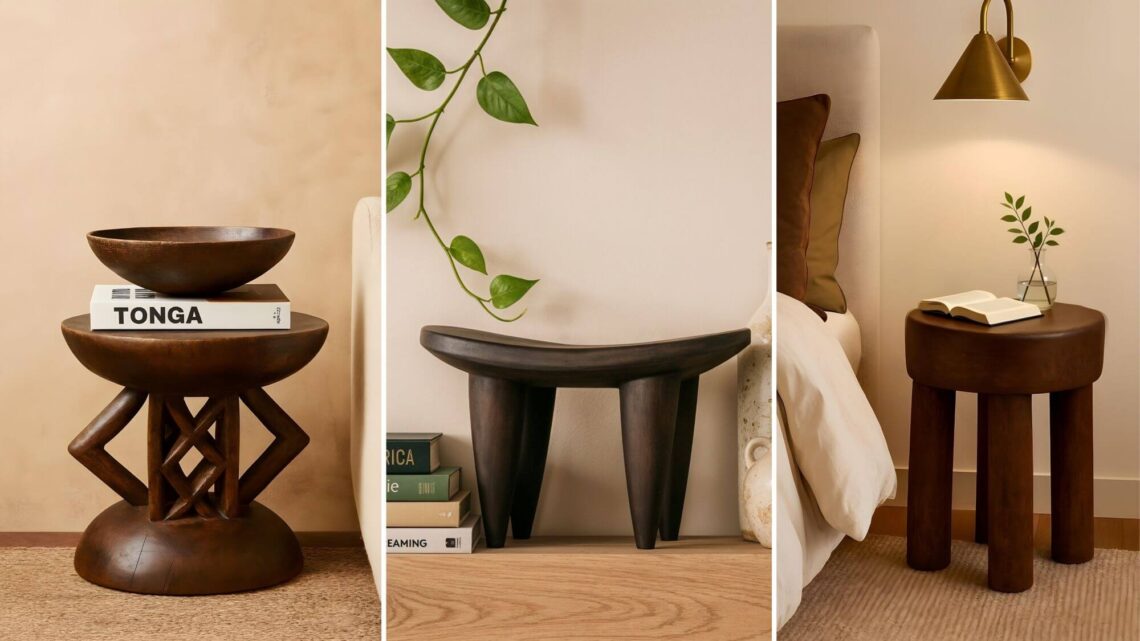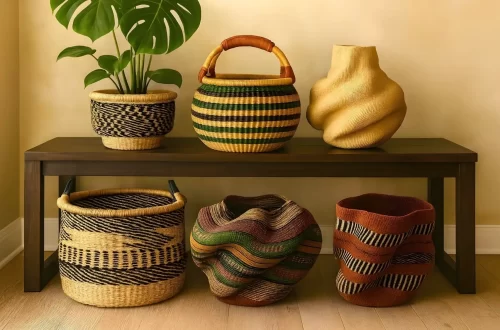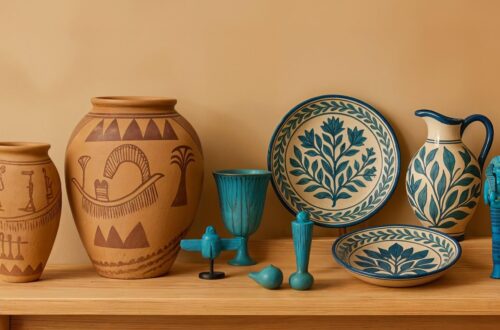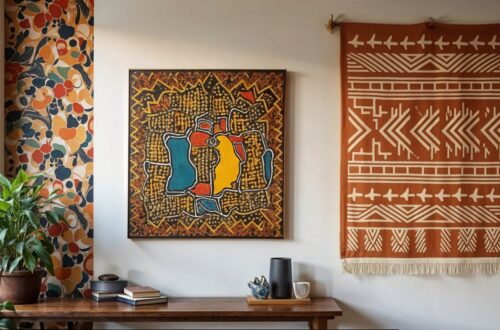Seats have always had a very special place in African culture. A stool could mark your rank, hold your spirit, or serve as a key item in every day tasks. Today, African stools still hold their own. Only now they’ve slipped into living rooms, art galleries, and glossy magazines. They’re cultural icons turned design staples — and they look just as striking in a modern homes as they once did in ceremonial circles.
Here are five favorites that continue to captivate.
Jump to:
1. Bamileke Stool: The Spider Everyone Wants at Home
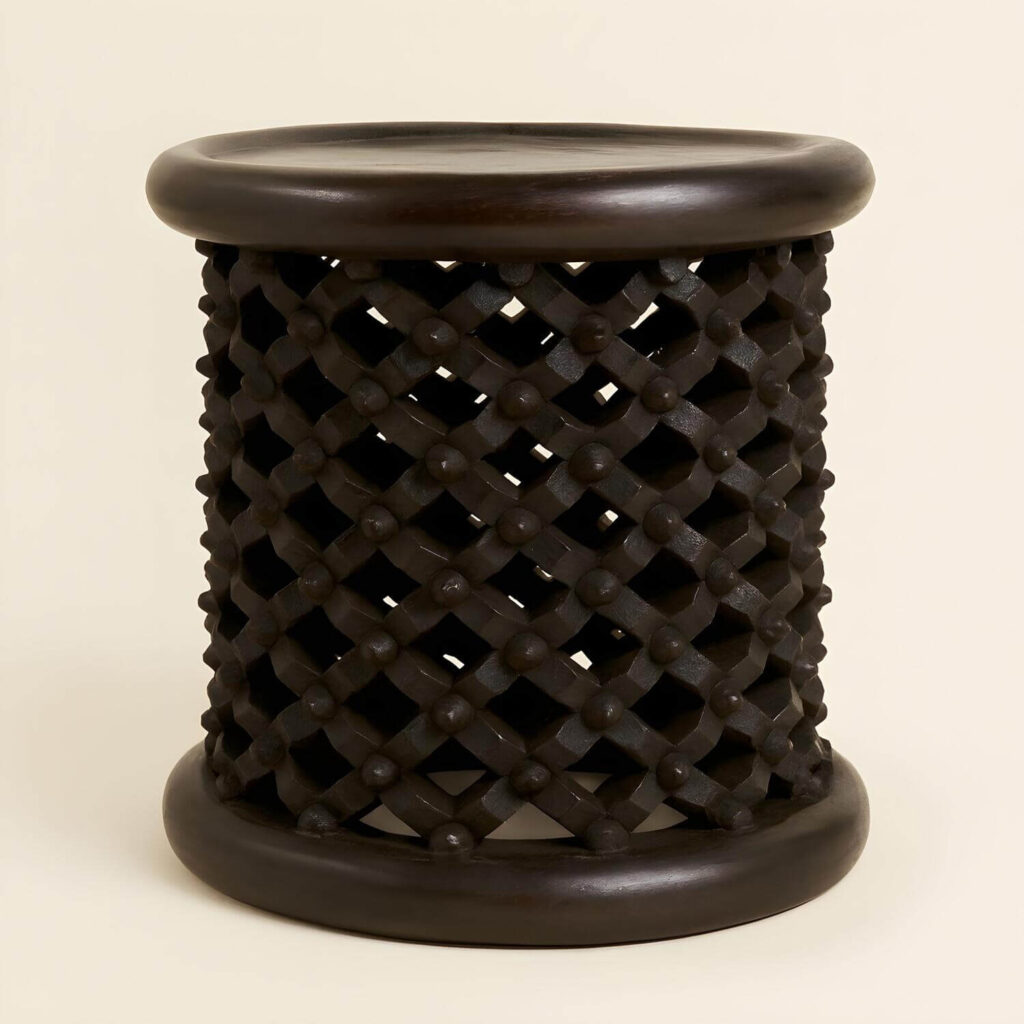
The Bamileke kingdom of Cameroon is famed for its woodcarving, and the stool is its star. While leopards, elephants, and buffalo sometimes appear in regal versions of the designs, the “Spider Stool” is the one that stole the spotlight in everyday homes. It is the one with that lattice carving that’s impossible to miss.
Why a spider? It’s not just about looks. The spider is seen as a messenger, linking the living world with the spiritual. Out of all African stools, this one might be the most versatile in modern interiors. Oversized versions hold their ground as coffee tables, while smaller ones moonlight as decorative, or functional side tables. Also a great extra seat if you put a cushion on it. No wonder it’s everywhere.
You May Also Like: The Powerful Bamileke Stool: Cameroon’s Spirit In Style
2. Senufo Stool: Carved in One Breath
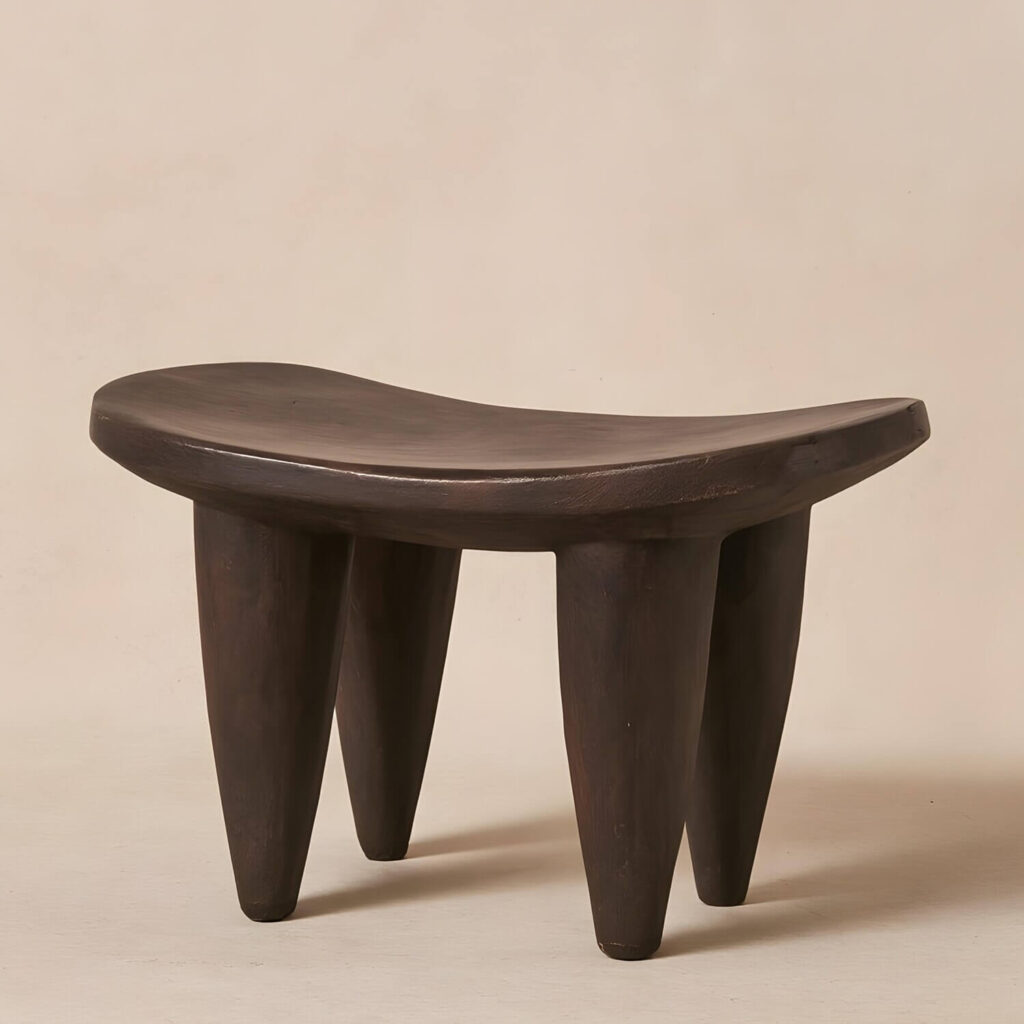
The Senufo people of Ivory Coast carve their stools from a single block of wood. No nails, no seams, just pure hand skill and a surprisingly simple design. That simplicity is exactly what makes them so hypnotic.
Traditionally, lower stools were used by women during chores, while taller ones marked ceremonies and gatherings. Although Senufo art has been admired in the West for over a century, the stools themselves only recently became design darlings. Social media had a lot to do with that. Now they’re often styled as sculptural pieces in modern homes, catching eyes not for their practicality but for their understated elegance.
You May Also Like: The Remarkable Rise of Senufo Stools in Global Interiors
3. Ashanti Stool: When Furniture Becomes Legend
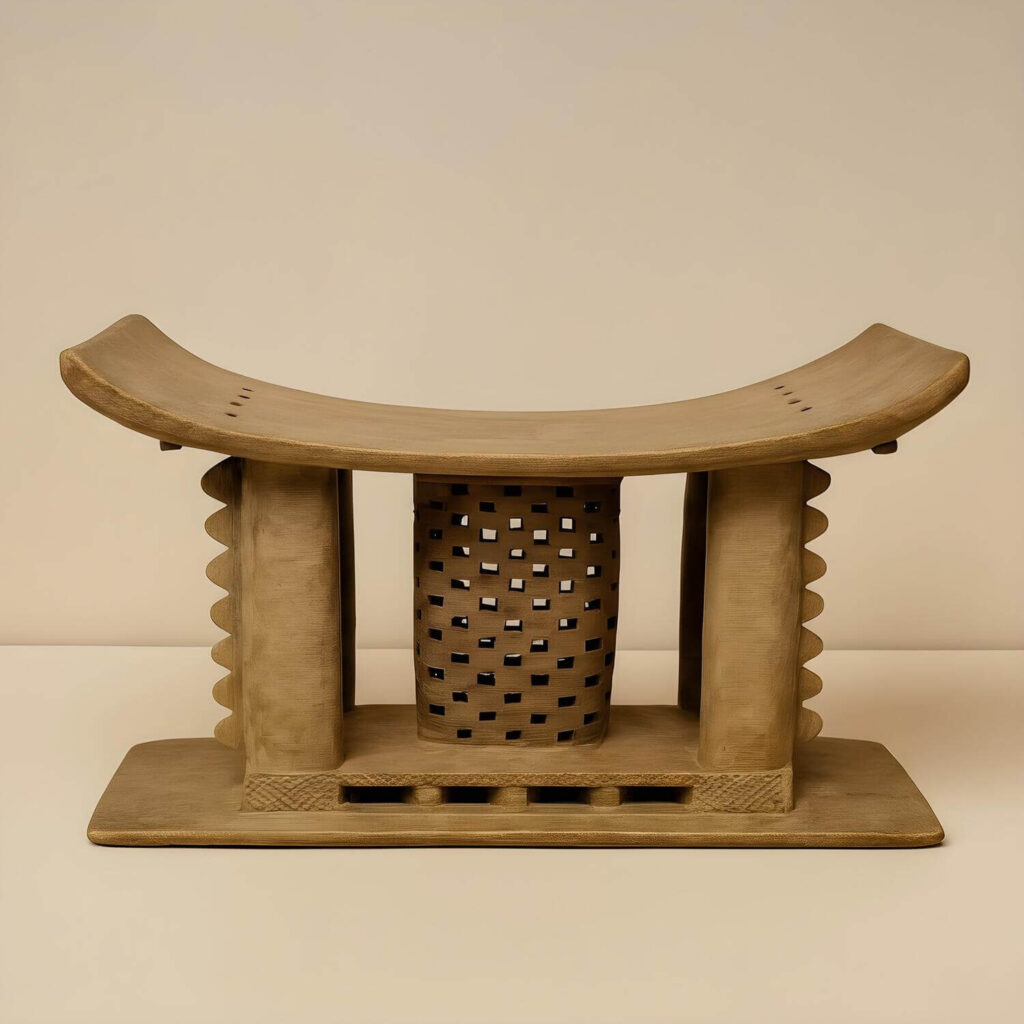
Seventeenth-century Ghana gave the world one of the greatest design legends: the Golden Stool. According to Ashanti tradition, it descended from the heavens into King Osei Tutu’s lap, shimmering with power and representing the soul of the Ashanti people.
No one could sit on it — not even the king. It wasn’t a mere piece furniture but a sacred object.
From that myth grew the tradition of wooden Ashanti stools. Chiefs, elders, and figures of rank used them as emblems of power. When their owners passed, the stools were placed in shrines and honored.
They share a familiar shape: curved seat, sturdy base, and legs that range from blocks carved with geometric designs, to animal shapes.
Ashanti stools today often live as standalone art objects in homes. Even stripped of gold, they still radiate authority.
You May Also Like: The Mighty Ashanti Stool | Make Your Home Fit for Royalty
4. Tonga Stool: Geometry with Grip
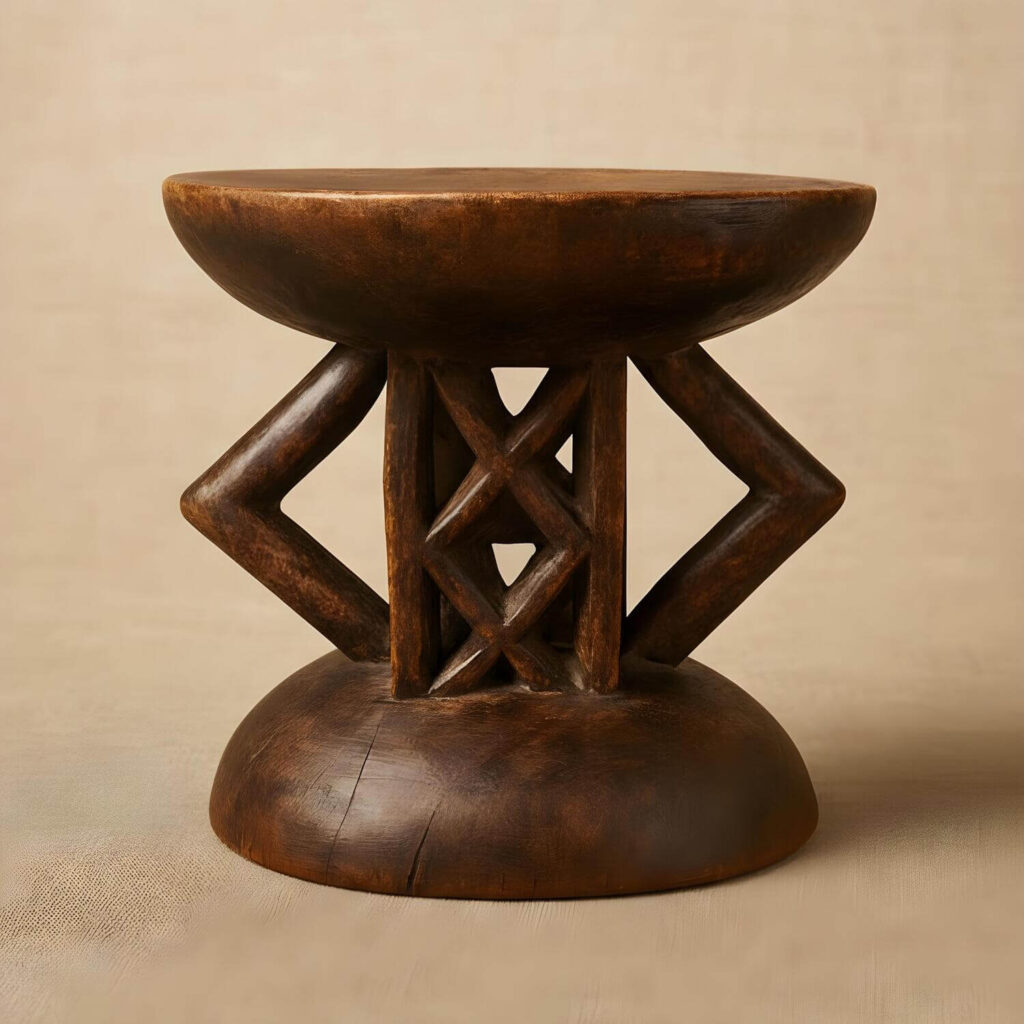
If I had to choose only one stool for myself, this would probably be it. Tonga stools, carved by the Tonga people of Zambia and Zimbabwe, balance practicality with a geometric punch.
Their design is distinct: thick circular bases and tops, connected by zigzag, straight, or rounded legs. Those legs aren’t just sculptural — they also double as handles. Perfect for picking up and moving around, which explains why they worked so well in nomadic life.
Historically, Tonga stools signified rank and authority, especially for elders. They also showed up in ceremonies and gatherings, which added layers of meaning to their design. Today, their strong forms and grab-and-go utility make them irresistible to collectors and designers alike.
5. Lobi Stool: Rustic and Full of Surprises
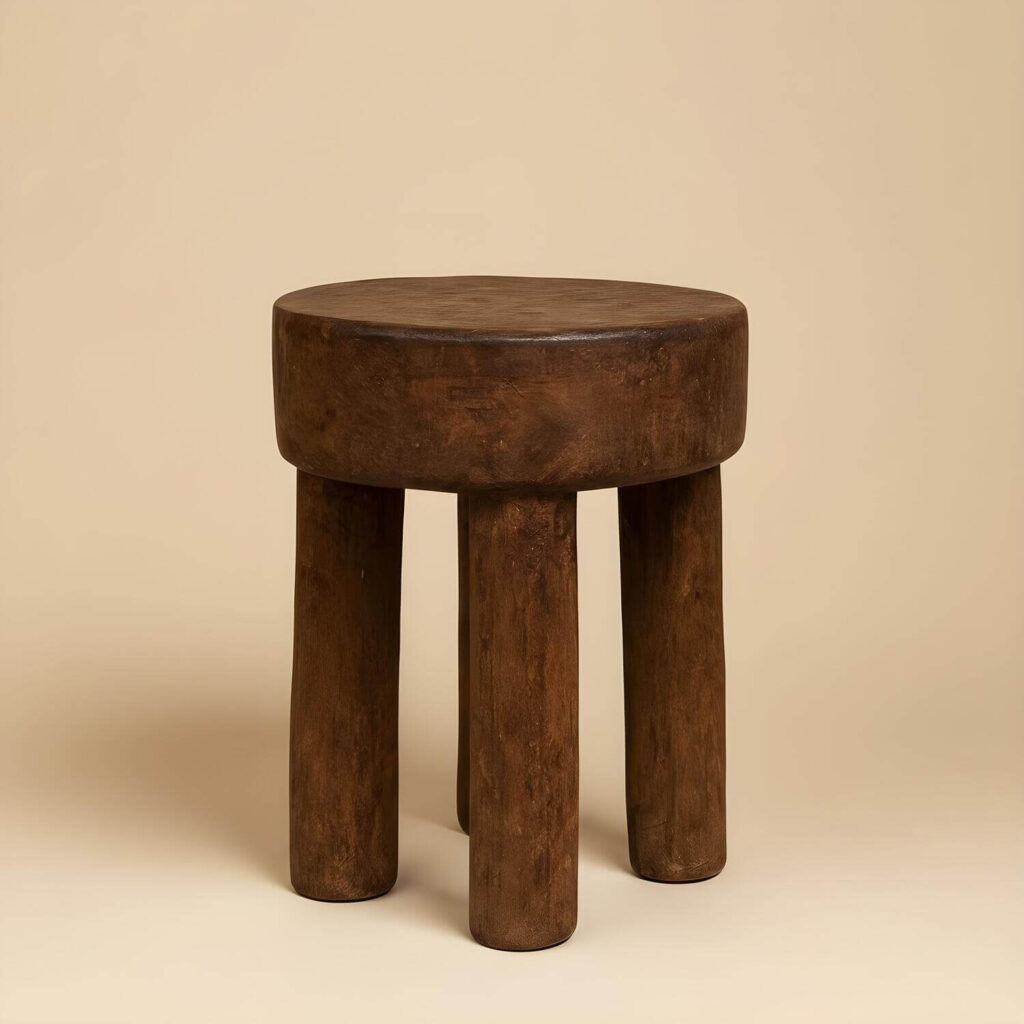
The Lobi people, originally from today’s Ghana and later spread into Burkina Faso and Côte d’Ivoire, are known for woodwork that defy a single definition. Especially their stools. Some have three stubby legs, others carry animal carvings, and a few feature human-like figures peering up from the base.
Men often carried them to gatherings, using them as portable seats while drinking millet beer.
Because the designs vary so much, “Lobi stool” can mean several things. The most common version today is a four-legged piece with chunky cylindrical supports and a round top. Rugged, practical, and versatile enough to easily fit in any interior style.
“The most important element of African furniture remains without question the seat, linked to the social rank of its owner. Travelers’ accounts from the 17th and 18th centuries indicate that when a chief moved, his seat followed him, carried by a servant.” — African Objects, L. Meyer
Styling African Stools in Your Home
African stools are works of art that elevate any corner of your home. In this section, we’ll explore how to let a stool shine on its own, turn it into a decorative or functional side table, or even weave it into curated displays. Whether you want a bold statement piece or a subtle accent, these stools adapt to your space with ease, adding character and texture wherever they sit.
1. Let Them Stand on Their Own
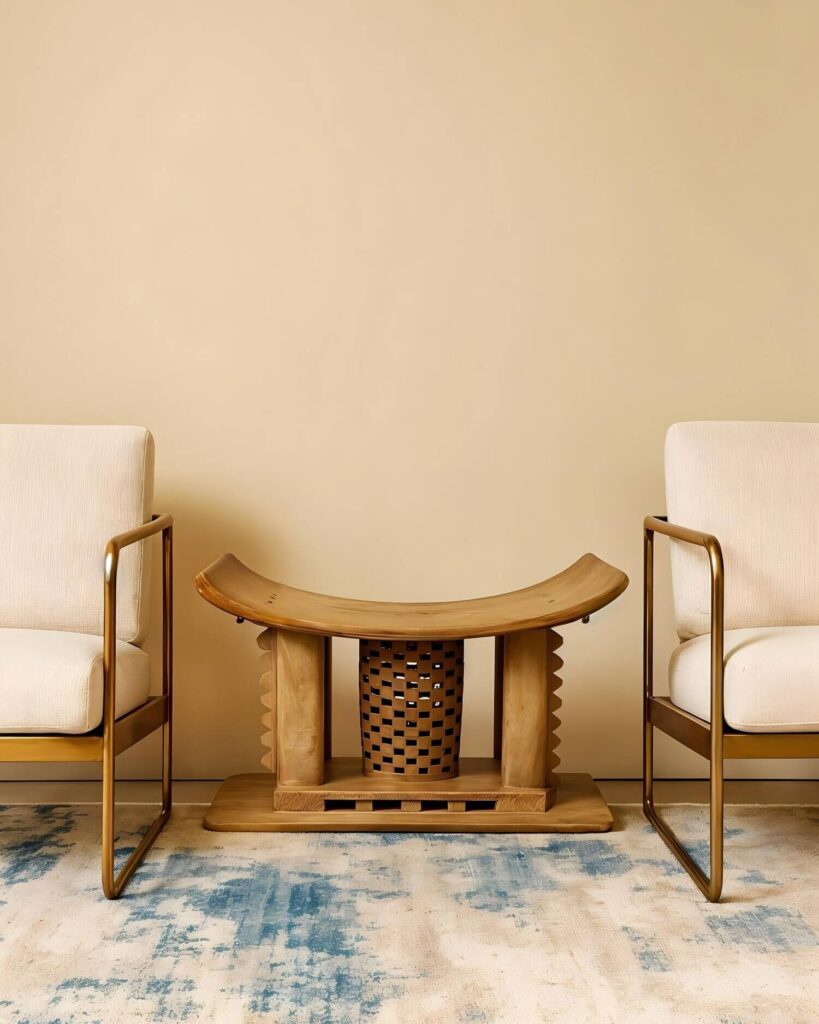
Bamileke and Ashanti stools are bold enough to shine solo. Place one in your entryway, at the foot of your sofa, or between two chairs, and you’ve got instant sculpture. Some people even stack two for added drama. Either way, trust that they will not escape anyone’s notice.
2. Turn African Stools into Decorative Side Tables
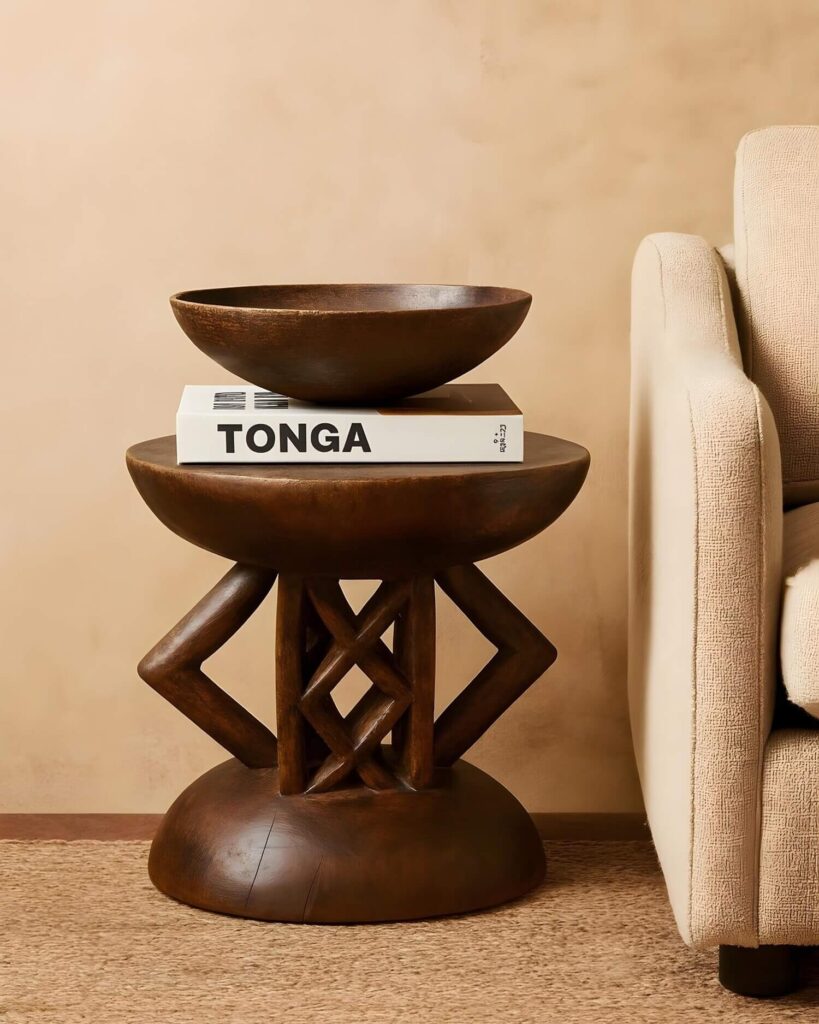
Senufo, Tonga, Lobi, and Bamileke stools work beautifully topped with a vase, African bowl, or stack of books. It’s like putting jewelry on a piece of art: it already looked good, but now it’s even more beautiful. Just remember to slip fabric underneath any item that might damage their beautiful wood.
You May Also Like: African Decor Guide: 10 Ideas for a Remarkable Home
3. Make African Stools Work for You
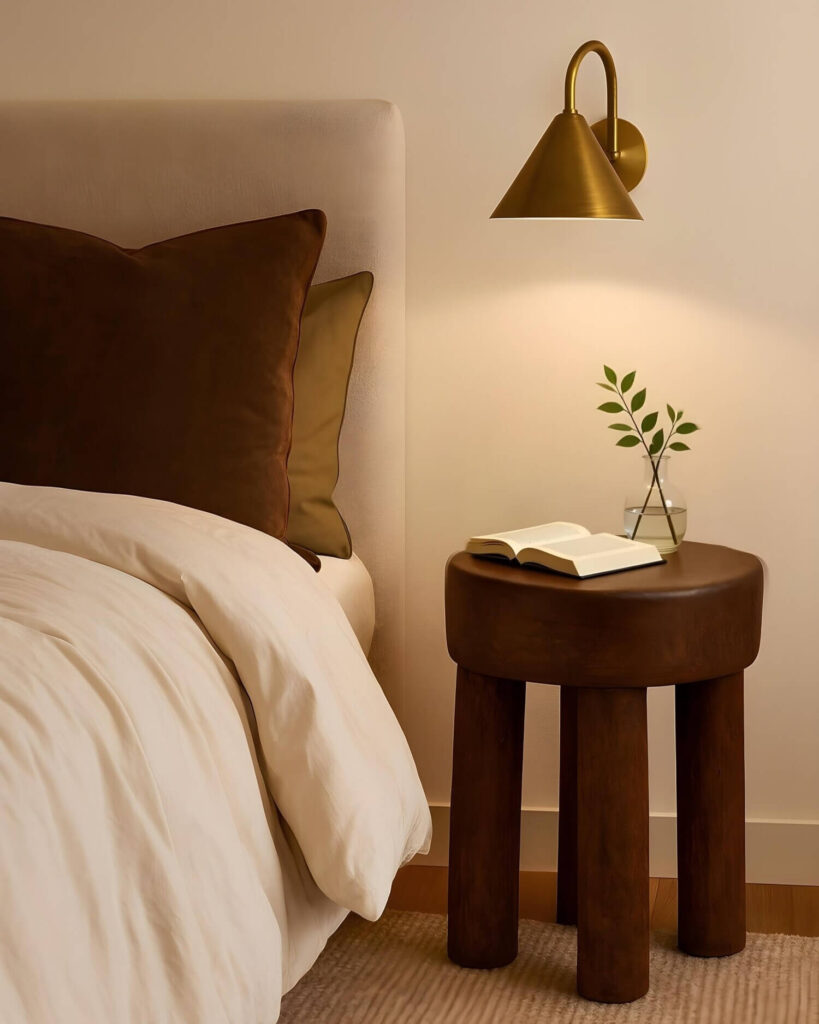
Beyond looking good, African stools can be the functional pieces you never knew you needed. Tonga, Lobi, and Bamileke stools can serve as side tables that catch your book next to a reading chair, folded towels in the bathroom, or even nightstands around your bed.
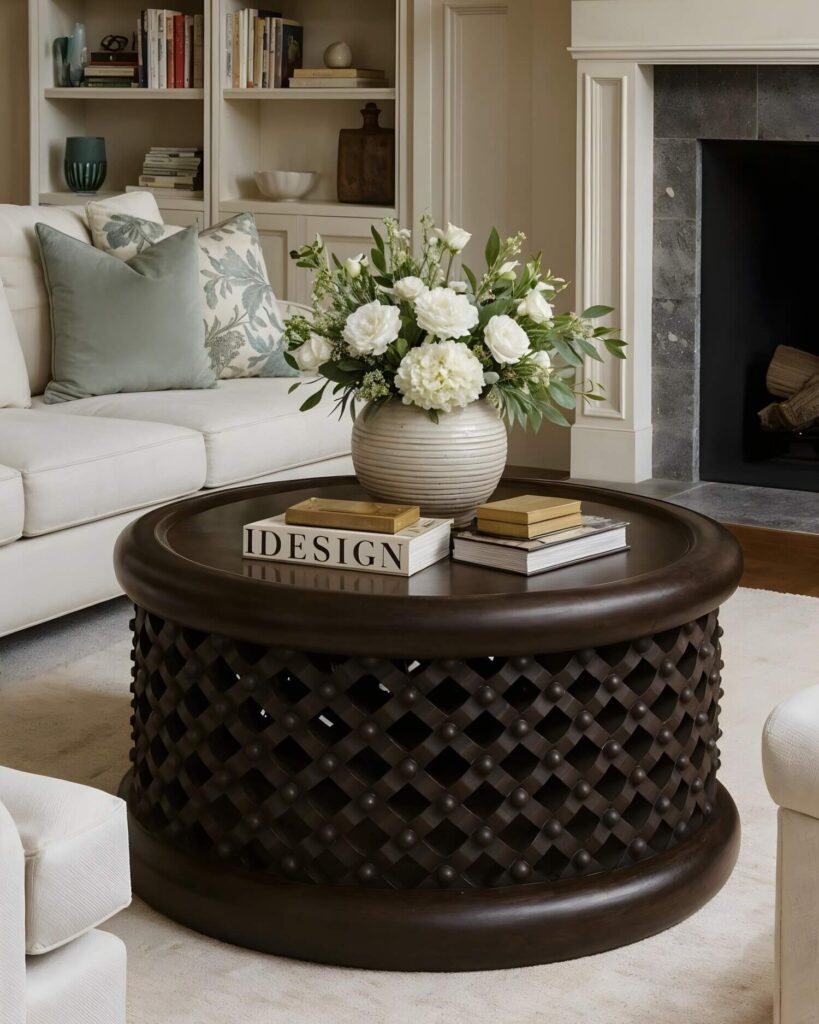
Bamileke versions even go big enough to be one of the most eye-catching coffee tables you’ve ever laid your eyes on. They are the definition stylish functionality.
4. Build a Display Around Them
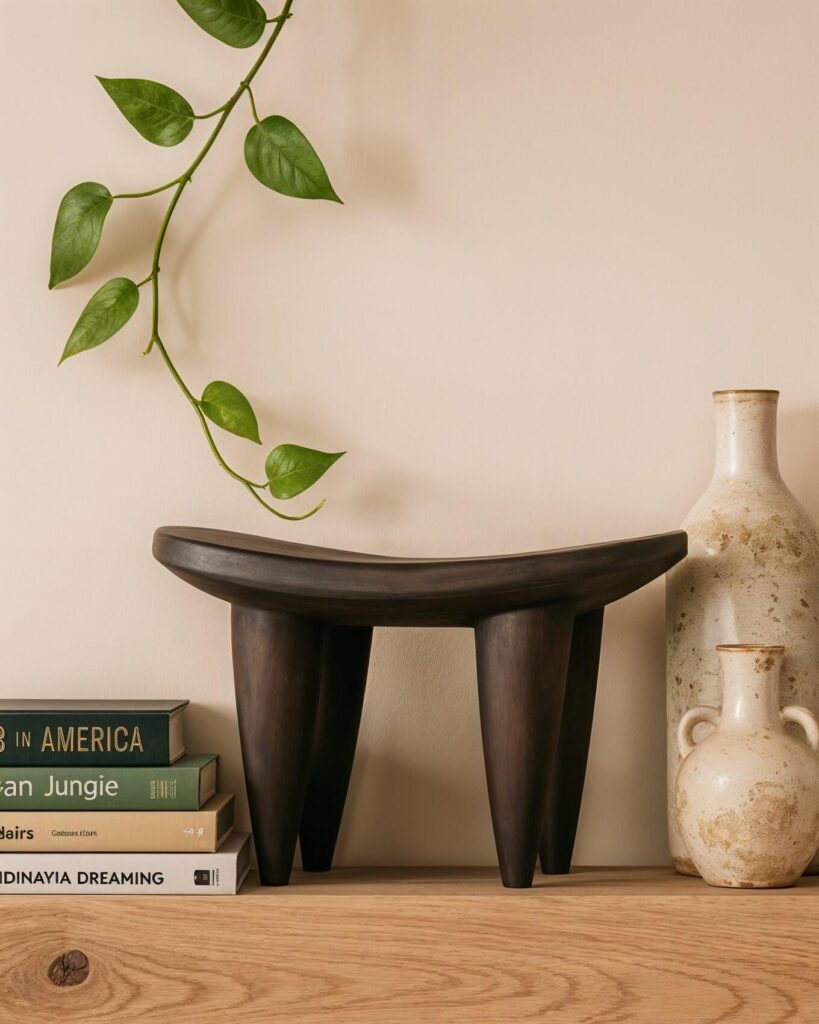
And last but not least, smaller stools like mini Senufo or Lobi pieces can join your console or shelf styling. Pair them with pottery, plants, or books to create a curated display that feels both lived-in and designer-worthy.
To sum it up, African stools are most definitely timeless.
They’ve carried chiefs, anchored ceremonies, and traveled across continents, only to find new roles in our homes. Rustic or regal, simple or symbolic, they always make an impression.
Place one in your home and you’re welcoming history, art, and style into just one piece.

